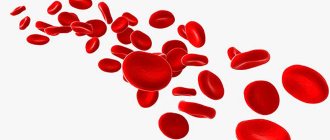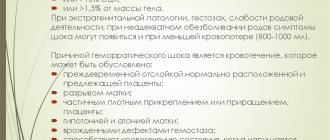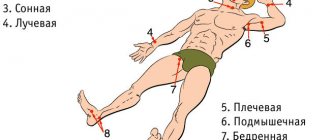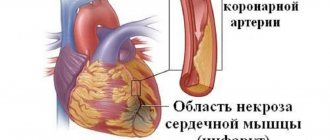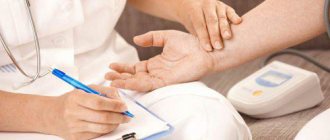Types of first aid
Depending on the type of qualifications of medical personnel and the location of emergency medical measures, the assistance to the victim is classified:
- First aid. Unskilled workers provide assistance at the scene until the ambulance arrives.
- First aid. Provided by a medical professional (nurse, paramedic) at the scene of the incident, at a paramedic-midwife station, or in an ambulance.
- First medical aid. Doctors provide the necessary tools in the ambulance, emergency room, and emergency rooms.
- Qualified medical care. It is carried out in a hospital hospital setting.
- Specialized medical care. Doctors provide a range of medical services in specialized medical institutions.
How to provide first aid
When providing first aid, it is important to follow the sequence of actions. Things to remember:
- Providing first aid to victims should begin with resuscitation measures - artificial respiration and cardiac massage.
- If there are signs of poisoning, induce vomiting with a large volume of water and give activated charcoal.
- In case of fainting, the victim is given ammonia to smell.
- In case of extensive injuries or burns, you should be given an analgesic to prevent shock.
For fractures
There are cases when fractures are accompanied by injuries and damage to the arteries. When providing primary care to a victim, the following sequence of actions must be followed:
- stop bleeding by applying a tourniquet;
- disinfect and bandage the wound with a sterile bandage;
- immobilize the injured limb with a splint or improvised material.
For dislocations and sprains
In the presence of sprain or damage to tissues (ligaments), the following is observed: swelling of the joint, pain, hemorrhage. The victim needs:
- fix the damaged area by applying a bandage using a bandage or improvised materials;
- apply cold to the sore spot.
When a dislocation occurs, the bones are displaced and the following is observed: pain, joint deformation, limitation of motor functions. The patient undergoes limb immobilization:
- When the shoulder or elbow joint is dislocated, the arm is suspended on a scarf or bandaged to the body.
- A splint is applied to the lower limb.
For burns
There are radiation, thermal, chemical, and electrical burns. Before treating the damaged area, you need to:
- free from clothes;
- Trim the stuck fabric, but do not tear it off.
When damaged by chemicals, first wash off the remaining chemical from the damaged surface with water, and then neutralize: acid with baking soda, alkali with acetic acid. After neutralizing chemicals or in case of a thermal burn, apply a sterile bandage using a medical dressing bag after the following measures:
- disinfection of lesions with alcohol;
- Irrigation of the area with cold water.
When the airways are blocked
When foreign objects enter the trachea, a person begins to choke, cough, and turn blue. In such a situation you need:
- Stand behind the victim, clasp him with your arms at the level of the middle of the abdomen and sharply bend the limbs. It is necessary to repeat the steps until normal breathing resumes.
- In case of fainting, you need to put the victim on his back, sit on his hips and press on the lower costal arches.
- The child should be placed on his stomach and gently patted between the shoulder blades.
In case of a heart attack
A heart attack can be identified by the presence of symptoms: pressing (burning) pain in the left side of the chest or shortness of breath, weakness and sweating. In such cases, the procedure is as follows:
- call a doctor;
- open the window;
- put the patient in bed and raise his head;
- Give acetylsalicylic acid to chew and nitroglycerin under the tongue.
For stroke
The onset of a stroke is indicated by: headache, speech and vision disturbances, loss of balance, crooked smile. If such symptoms are detected, the victim should be provided with primary care in the following sequence:
- call a doctor;
- calm the patient;
- give him a reclining position;
- If you are vomiting, turn your head to the side.
- loosen clothes;
- provide a flow of fresh air;
In case of heatstroke
Overheating of the body is accompanied by: increased temperature, redness of the skin, headache, nausea, vomiting, increased heart rate. In such a situation, first aid to victims is carried out in the following order:
- move the person to the shade or cool room;
- loosen tight clothing;
- apply cold compresses to different parts of the body;
- Drink cold water constantly.
In case of hypothermia
The onset of hypothermia is indicated by the following signs: blue discoloration of the nasolabial triangle, pale skin, chills, drowsiness, apathy, and weakness. The patient must be gradually warmed up. To do this you need:
- change into dry, warm clothes or cover with a blanket, if possible give a heating pad;
- give hot sweet tea and warm food.
For head injury
Due to a head injury, a concussion (closed craniocerebral injury) is possible. The victim experiences headache, dizziness, nausea, vomiting, sometimes loss of consciousness, impaired breathing and cardiac activity. A skull fracture can cause brain damage from bone fragments. A sign of this condition is: discharge of clear fluid from the nose or ear, bruises under the eyes. In case of a head injury, the actions should be as follows:
- Check pulse and breathing and, if absent, carry out resuscitation measures.
- Provide the victim with rest while lying on his back with his head turned to the side.
- If there are wounds, they must be disinfected and carefully bandaged.
- Transport the victim in a supine position.
First aid rules
What does a first aid provider need to know? In case of accidents, it is important for those around you not to get confused and to quickly and coordinately carry out the necessary measures. To do this, one person must issue commands or perform all actions independently. The algorithm for providing first aid depends on the type of injury, but there are general rules of conduct. The rescuer needs:
- Make sure that he is not in danger and begin to take the necessary measures.
- Perform all actions carefully so as not to worsen the patient's condition.
- Assess the situation around the victim; if he is not in danger, do not touch him until examined by a specialist. If there is a threat, it is necessary to remove it from the affected area.
- Call an ambulance.
- Check the victim's pulse, breathing, and pupillary response.
- Take measures to restore and maintain vital functions before the specialist arrives.
- Provide protection to the victim from cold and rain.
